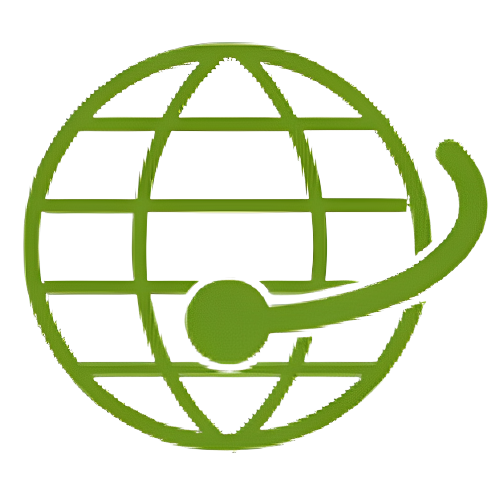Unlocking the timeless language of Morse Code takes on a luminous twist as we delve into the art of conveying messages through light signals. In this guide, we embark on an illuminating journey, exploring how Morse Code with light transcends traditional communication methods to dance in the brilliance of light.
It is easy to use light to write Morse code. Longer light beams represent dashes, whereas dots are conveyed with shorter bursts. Line-of-sight security is achieved by transmitting Morse code with light; only those who can see the light can receive the signal. The US Navy ships that utilize signal lamps to communicate during radio silence are a real-world example.
Whether you’re a history enthusiast, a survivalist honing essential skills, or intrigued by the versatility of Morse Code, this Morse Code Translator tutorial is your beacon to mastering the art of Morse Code with light. Join us as we decipher the dots and dashes, translating them into flashes that speak volumes in the language of light.
Morse Code With Light: The Basics

Morse Code represents letters and numbers through dots (short signals) and dashes (long signals) sequences. When adapting Morse Code to light, these dots and dashes are translated into short and long bursts of light, offering a visual and dynamic way to convey messages.
Here are the essential components:
- Dot (·): A short burst of light, often represented by a quick flash.
- Dash (–): A longer burst of light, typically sustained for a slightly extended duration.
Morse Code Alphabet With Light: A Quick Reference
- A (·–)
- B (–···)
- C (–·–·)
- D (–··)
- E (·)
- F (··–·)
- G (––·)
- H (····)
- I (··)
- J (·–––)
- K (–·–)
- L (·–··)
- M (––)
- N (–·)
- O (–––)
- P (·––·)
- Q (––·–)
- R (·–·)
- S (···)
- T (–)
- U (··–)
- V (···–)
- W (·––)
- X (–··–)
- Y (–·––)
- Z (––··)
- 0 (––––)
- 1 (·––––)
- 2 (··–––)
- 3 (···––)
- 4 (····–)
- 5 (·····)
- 6 (–····)
- 7 (––···)
- 8 (–––·)
- 9 (––––·)
How to Use Morse Code With Light?

Using Morse Code with light involves translating the dots and dashes of Morse Code into visual signals using light. Here’s a guide on how to use Morse Code with light:
1. Learn Morse Code Basics: Familiarize yourself with the Morse Code alphabet, which consists of combinations of dots (short signals) and dashes (long signals) representing each letter and number.
2. Prepare a Light Source: Choose a reliable light source, such as a flashlight, signal lamp, or any device capable of emitting controlled bursts of light. Ensure the light can be easily turned on and off.
3. Understand Morse Code Signals: Associate the Morse Code signals with your chosen light source:
- Dot (·): A quick flash of light.
- Dash (–): A longer burst of light.
4. Practice Common Morse Code Sequences: Use your light source to practice common Morse Code sequences for letters, numbers, and words. For example:
- SOS (··· — ···): … — …
5. Transmit Messages: When you’re ready to transmit a message, use your light source to replicate the Morse Code signals for each letter or number. Use pauses between letters and words to avoid confusion.
6. Receive Messages: To interpret messages from others, observe the light signals and decode them using your knowledge of Morse Code. Recognize the patterns of dots and dashes to identify each character.
7. Practice Fluency: Enhance your proficiency by practicing regularly. Increase the speed of your signals as you become more comfortable with Morse Code with light.
8. Apply in Practical Situations: Morse Code with light can be practical in various situations, such as signaling for help in emergencies, communicating silently in the dark, or engaging in Morse Code conversations.
Remember to tailor the speed and intensity of your light signals based on your communication needs and the visibility of the surroundings. Whether for survival skills, outdoor adventures, or historical appreciation, Morse Code with Light offers a versatile and fascinating mode of communication.
Conclusion
In drawing the curtain on our exploration of Morse Code with light, we’ve witnessed the transformation of simple flashes into a sophisticated means of communication.
The rhythmic dance of light, encapsulated in dots and dashes, provides a unique and versatile method for conveying messages across distances. Whether signaling for help in an emergency, communicating silently, or immersing oneself in the rich history of Morse Code, the marriage of light and Morse brings forth a dynamic mode of expression.
As you venture into the realm of Morse Code with light, let the flickering signals spark curiosity and creativity. From flashlight conversations to signaling across vast expanses, the art of Morse Code continues to illuminate communication paths in both practical and artistic realms.
Illuminate your understanding, and may your messages shine brightly in the intricate patterns of Morse Code with light.
